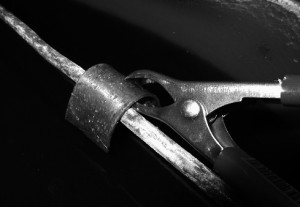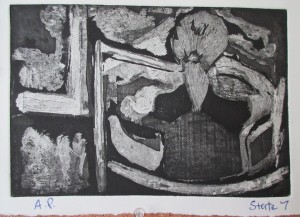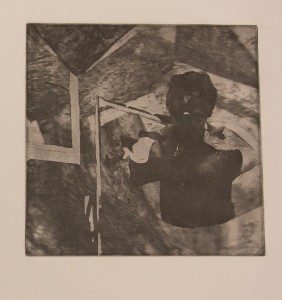Even though I first started working as a professional photographer back in 1978, it was only nine years ago, after I had left behind a two decade career as a lawyer when I got into printmaking. It all started at George Hawken’s print studio at the University of Toronto. At that time, I was updating my painting and drawing skills working towards a degree the U of T visual studies program, and later participating in Artist’s Residencies in Czech Republic, USA and Brazil.

My actual studio practice explores local spaces in relationship to people (neighbours) and objects.The space transcending at the simplicity of life daily rituals looking for shapes, light and lines.Combining photo and electro-etching leads my experimental researches and after overcoming painful succession of failures I am happy to see results. Specially by achieving a range of graytones to the deepest blacks and contrast.

By comparing the same image either etched on nitric acid on zinc plate (bottom left) and electricity on copper plate (right) using constant current and voltage, we can observe the effects (language) each technique can offer. Both plates were laminated with Puretch and developed after exposed to Ultraviolet light Exposure Systems.

Once photo-etched, both plates were further etched. The copper plate was etched in seven states. Oil based grounds and alcohol based glass ink were applied as stop-outs. I am staying away from acrylic grounds which are really hard to be removed.
From photographic feel to painterly, electro-etching seems to be a better fit for painters adventuring into printmaking. Not to mention avoiding the hazards of working with Nitric Acid what in itself is quite beneficial.
